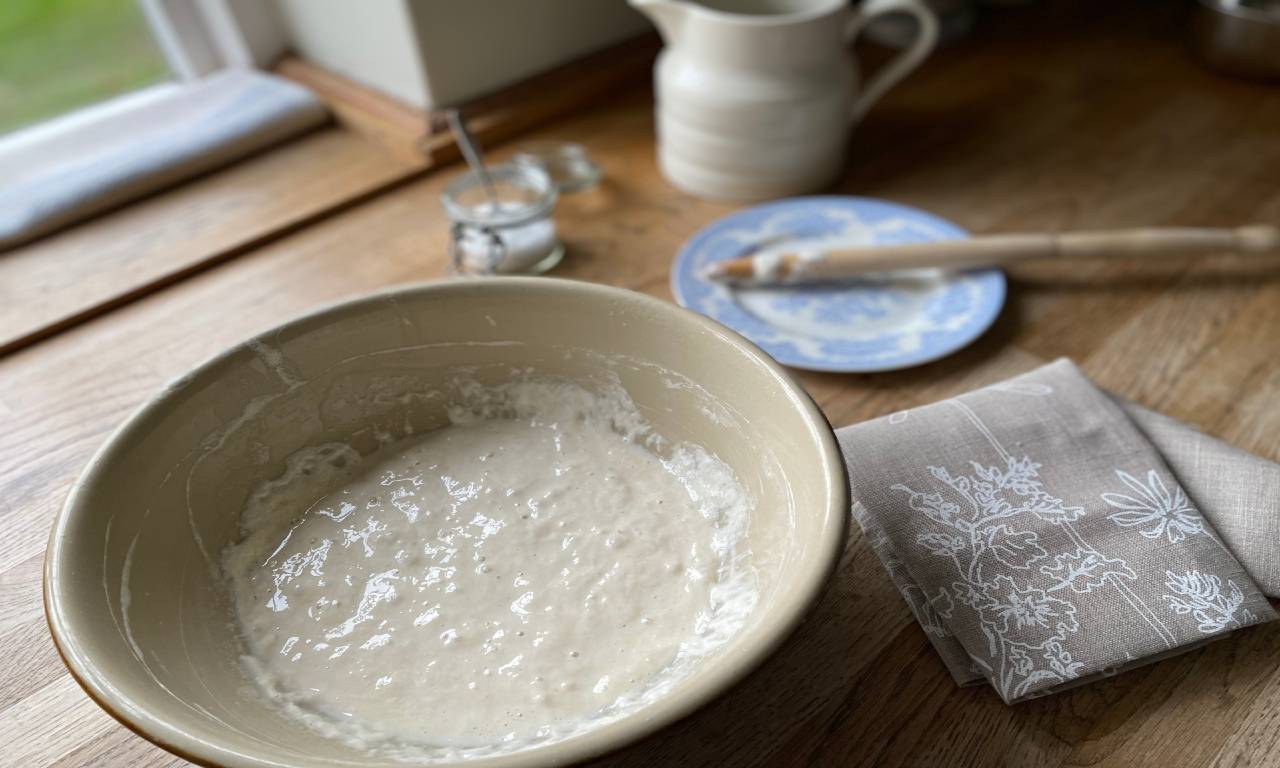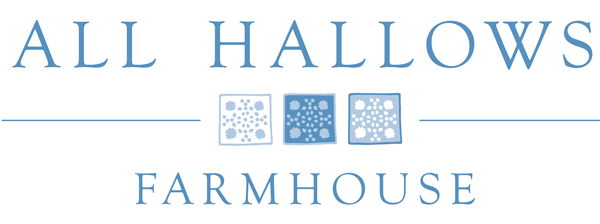None of us can bear to waste food. This recipe, using the left over sourdough from our white starter, has been a favourite in our household recently. If you like a fluffy pancake with a slight lactic note rather than a thin crepe, this method is for you. We suggest that you use fresh discard and prepare the batter at least 30 minutes before flipping your pancakes.
As we bake sourdough nearly everyday our starter is active and stored in a cool pantry, rather than the ‘fridge. Prepare the batter at least 30 minutes before flipping your pancakes. If you find yours is happiest kept chilled, just like make a loaf, you will need to bring it to room temperature before mixing the batter. Feed the starter as normal on day one and then make the pancakes with the discard from day two.
For our recipe, to make at least six- eight large pancakes, you will need…
200 g spelt flour or plain white if you prefer
220 g sourdough starter
300 ml almond milk
80 ml filtered water at room temperature
2 large free range eggs
25 g melted butter
1/2 teaspoon finely ground sea salt
1/2 teaspoon baking powder
Non stick frying pan
Additional clarified butter or oil to cook the pancakes

Measure the flour into a large bowl and make a well in the centre.
Add the sourdough starter, almond milk, water and beaten eggs to the bowl and gradually incorporate all the flour until no lumps remain and the mixture has a thick but spoonable consistency. Rest the batter for at least thirty minutes.
Meanwhile melt the butter in the AGA simmering oven or microwave and finely grind the sea salt. When you are ready to cook the pancakes, preheat a 15 cm (6 inch) frying pan and add the baking powder, salt and butter to the batter. Mix well.
Pour some oil or clarified butter on to a piece of kitchen paper and wipe the hot pan with this to ensure it is evenly coated. I Return the pan to your conventional hob or AGA simmering plate over a medium heat and ladle or use a measuring jug to pour approximately 50 ml (2 fl oz) batter into the hot pan. Swirl the batter around in the pan to make sure that the base is evenly covered and then tilt the pan so that the pancake mix comes around the edges too. Return to the hob and continue cooking for about a minute, depending on your heat source. Using a palette knife or fish slice, slide this under the pancake to lift the edges and then flip over. Continue cooking for another minute and then serve. Remeber that this recipe will not produce thin crepes but a fluffier, well risen alternative.
Don’t despair if your first attempt is not successful. This initial pancake is usually regarded as a ‘scruffer’ in our kitchen and the continuing batch will, I promise, become perfect. Repeat the process of adding a little oil or butter to the hot pan until all of the batter is used.
Notes for cooks
No two starters are the same and if yours if is happiest kept in the fridge, you will need to bring it to room temperature before mixing the batter. Feed the starter as normal on day one and then make the pancakes with the discard from day two, just as you would when you create a loaf or two.
Cooking pancakes on the AGA
As this is a thick batter, it is possible to cook sourdough pancakes on a well greased simmering plate or if you prefer using a sheet of bake-o-glide.

